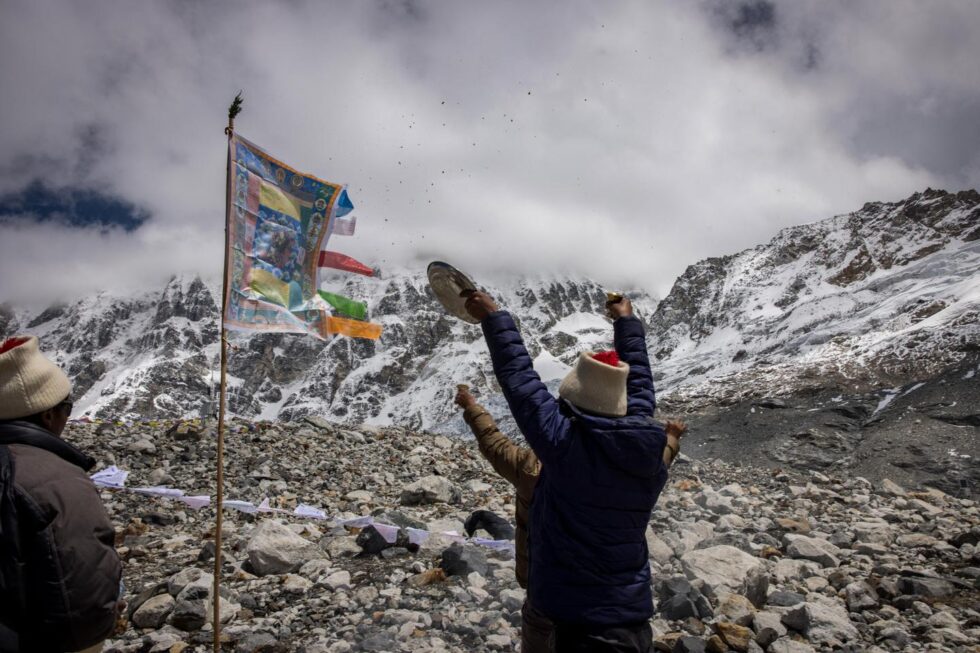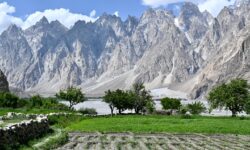
Gusts of wind carried the chants of the Tibetan lamas toward the snowcapped slopes of the sacred Himalayas. Three Buddhist monks sat on the stones of the desolate landscape of rock and ice. Some 100 small white prayer flags fluttered in the blue sky above them.
Here at the foot of the Yala Glacier, nestled at the very end of the Langtang Valley in Nepal, a group of residents from the villages below, accompanied by scientists from several countries in the region, walked for days to pay their respects to the white giant. Most locals practice Tibetan Buddhism, and the date chosen, May 12, was Vesak Day, a traditional holiday commemorating the birth, enlightenment and death of Buddha.
They gathered to honor the glacier, which is destined to disappear. Located between 5,160 and 5,749 meters above sea level, it has lost two-thirds of its mass and receded by 784 meters since 1974, the year it was first measured by a team of Japanese scientists.
Under the effects of climate change, the snow and the ice have gradually diminished and revealed the rocky terrain. “It was dreamlike, everything was white,” said Sharad Joshi with nostalgia. As the leader of the group of scientists, the cryosphere specialist at the International Centre for Integrated Mountain Development (ICIMOD) in Kathmandu knows Yala like no one else. “To see how quickly the glacier has retreated in front of our eyes makes me incredibly sad,” he said, powerless.
A funeral for an ice giant
For more than a decade, the short man with a soft voice and an Olympian calm has climbed the mountain twice per year to measure the ice. He considers glaciers to be the Earth’s thermometers. Their extreme sensitivity to variations in temperature makes them key indicators of global warming, and every tenth of a degree speeds up their melting.
You have 90.05% of this article left to read. The rest is for subscribers only.








